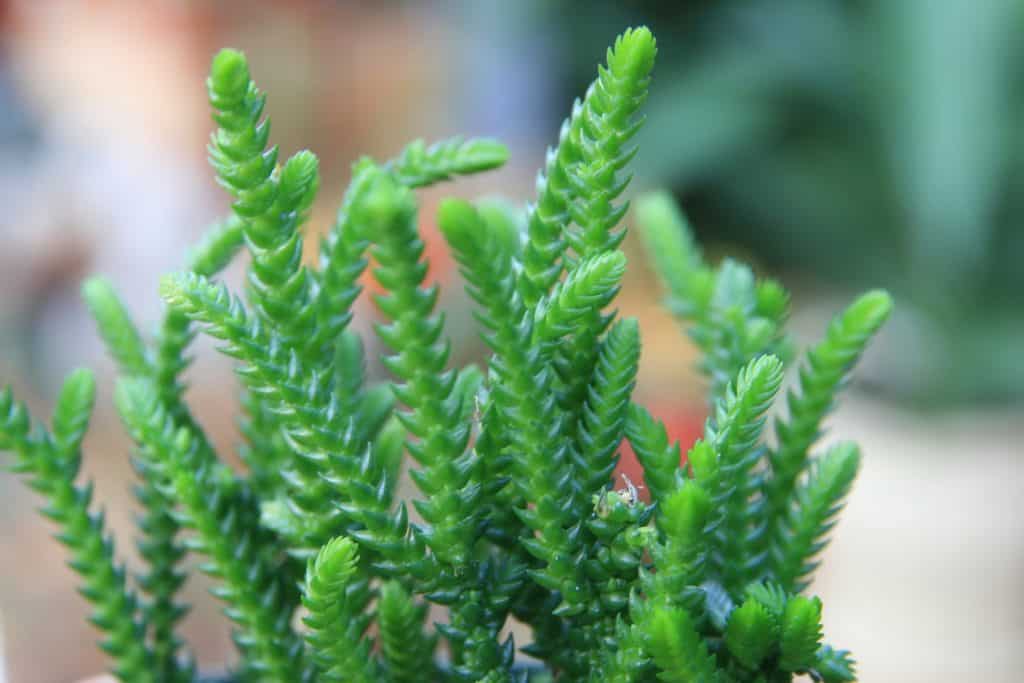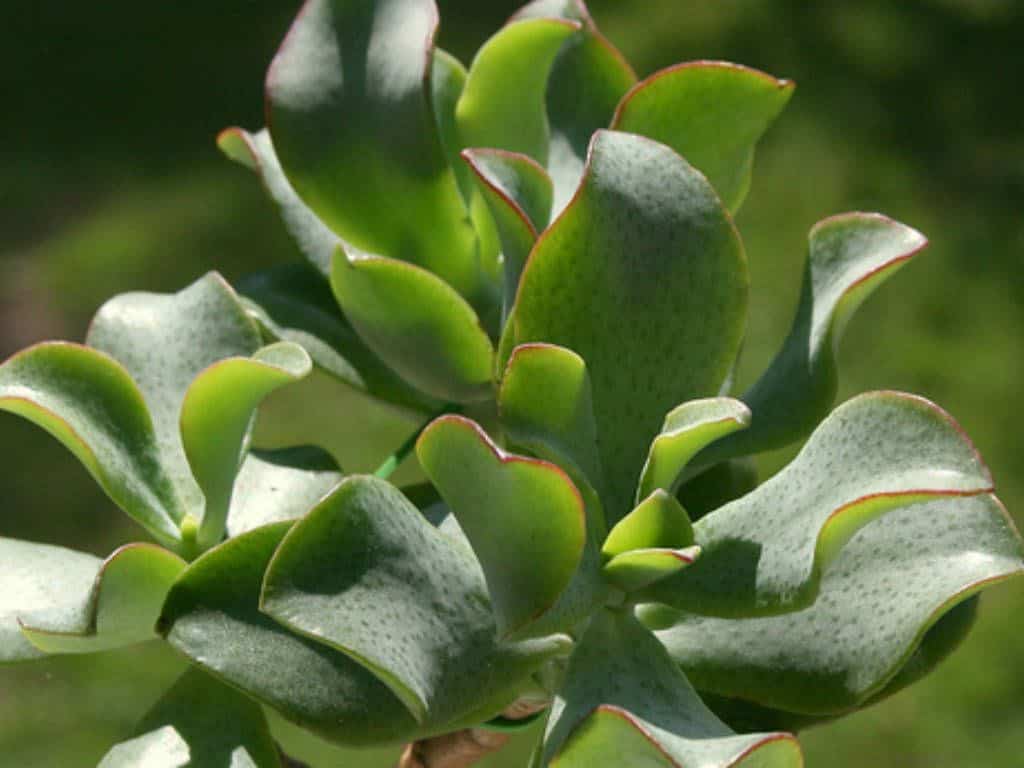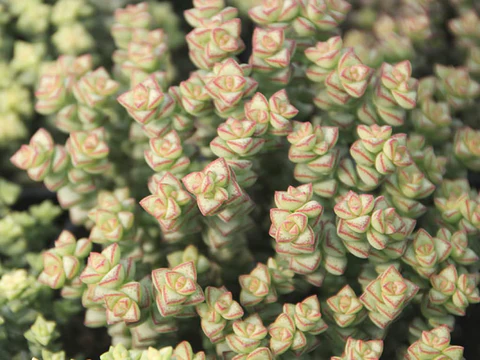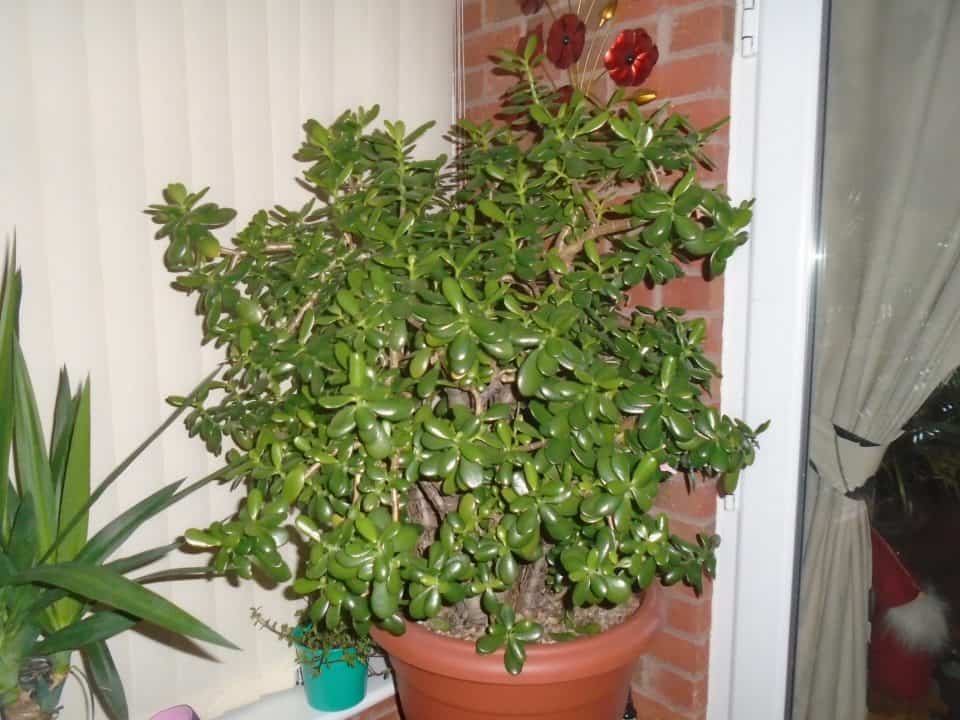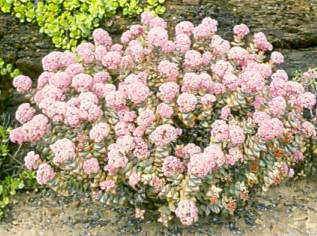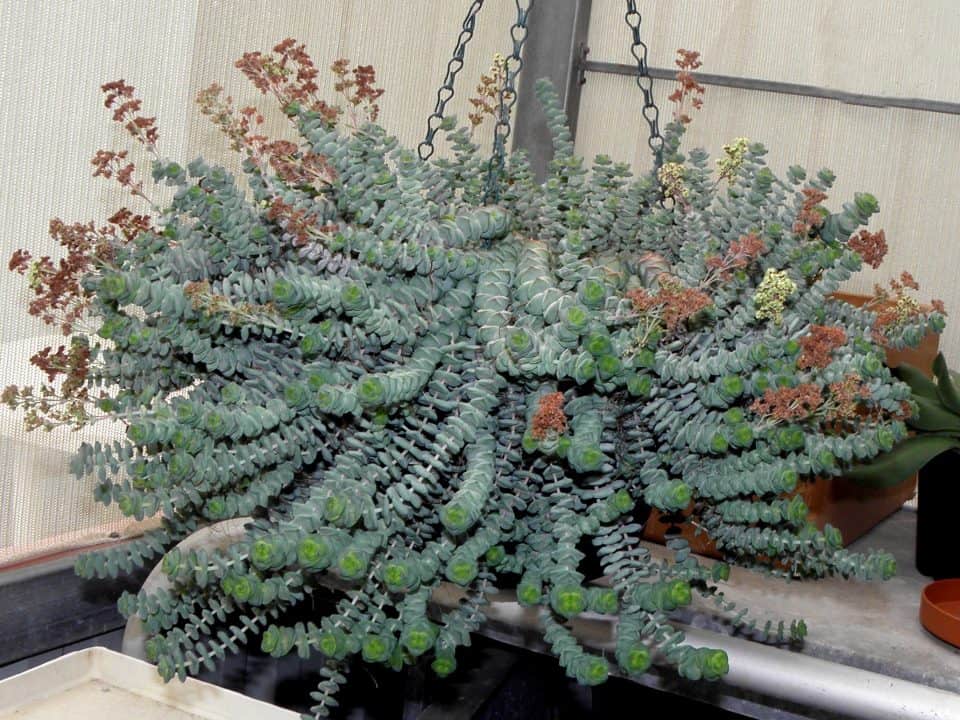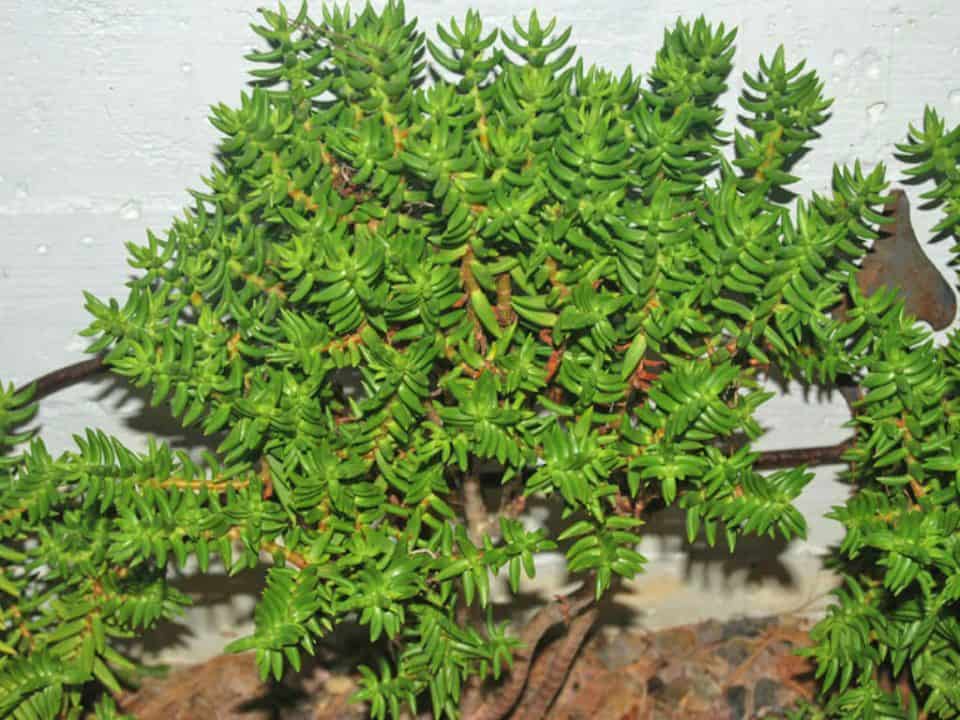Crassula muscosa, also known as Watch chain succulent, Princess Pine succulent, crassula lycopodioides, rattail crassula, chain plant, or the Lizard tail succulent, has taken the world by storm in recent years.
This succulent variety of Crassula has almost become synonymous with the popular Air Plant trend that’s been growing in popularity with indoor gardeners and home decorators.
While there are many reasons why this leafy green succulent has become so popular, there are also some things to know about the crassula muscosa if you’re considering it as an addition to your own indoor garden or indoor living space.
Crassula muscosa succulents come in many varieties and are just as interesting to grow and observe as they are to name. The watch chain succulent is one of the most common chain plant varieties, with linear, succulent leaves that can grow up to 30 long!
It requires full sun exposure, good drainage, and a very loose soil mixture of sand and peat to stay happy and healthy in your garden or terrarium.
Origin and descriptions
Crassula muscosa (also called the money tree) belongs to the Crassulaceae family, native to South Africa and Namibia. It’s a type of ‘Princess Pine’ succulent, but it’s also sometimes called ‘Lizard Tail’ because of its crinkly, scaly leaves. Some people think that it looks like an ornamental ‘wavy-leaved maple.’
One thing is for sure, crassula mucosa is a fascinating-looking plant. The leaves are thick and waxy, growing in a rosette pattern around a central stem. The plants grow slowly, so they make great starter plants for those new to gardening or who have little space.
The rattail crassula can be planted indoors or out in U.S. Department of Agriculture hardiness zones 9 through 11; otherwise, they can be grown as houseplants anywhere else in North America where there is bright light year-round.
Crassula muscosa propagation
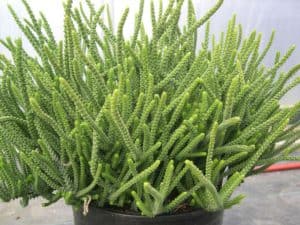
Crassula muscosa is an excellent princess pine succulent. Propagation is very easy in comparison to most other plants. All you need to do is take a leaf off of one and stick it in some soil until it takes root.
You may have seen people do much more elaborate things with cuttings but all that’s really necessary is sticking your cutting in some dirt and having it exposed to light.
A few weeks later, you’ll have another plant! This makes propagation great for people who are new to gardening or don’t want to spend a lot of money on new plants.
If you’re looking for something similar but even easier try propagating lizard tail succulent (Gasteraloe beguinii). They’re slightly harder than watch chains so they make a good step up from them if you’re just getting started with propagation.
Crassula muscosa care information
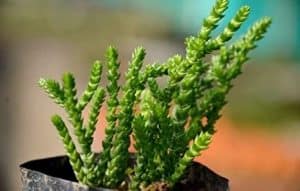
Crassula muscosa, also known as princess pine succulent or rattail succulent, is one of those plants that is almost impossible to kill.
Like all Crassulas, it’s a very forgiving plant with excellent low-light tolerance and few special requirements. It does well in either full sun or partial shade, and its size can be kept compact by pruning it lightly on a regular basis.
The trick to keeping your Lizard tail succulent looking great is simply watering and fertilizing regularly. This succulent will do best in an open soil mix with good drainage like cactus potting mix but will grow fine in any standard soil mix if you’re careful not to overwater.
The key is to water until excess water runs out of the bottom of your pot—then wait until you see new growth before watering again.
Light requirements
Crassula muscosa need lots of light. A south-facing window is best; a south- or west-facing window with a sheer curtain to diffuse some of that afternoon sun can also work well. These succulents can survive in lower light conditions, but they won’t thrive. If your plant doesn’t receive enough light, its leaves will begin to turn yellow and fall off.
Soil/potting mix
It’s best to start plants from cuttings in a soil-based mix that drains well. Crassula must be potted in a well-draining mix, such as one part coarse sand and one part potting soil.
Do not use garden soil to repot crassulas as it will retain too much moisture around their roots and could lead to rotting. Potted plants should be kept evenly moist but not soggy or waterlogged, so allow room for drainage.
Watering
Like many succulents, Crassula muscosa are drought-tolerant but that doesn’t mean they can survive without any water at all. For example, lizard tail succulents and princess pine succulents thrive in dry and hot climates but require regular watering when growing indoors.
Indoor plants are kept on or near a windowsill where they receive plentiful sunlight throughout the day and heat from nearby fixtures.
Fertilizer
Watch chain succulents are considered easy to care for, as long as you give them some basic TLC. To avoid burn damage to your plants, keep in mind that they require less water than other succulents. In fact, you’ll need to let them dry out between watering sessions. During their active growth period from fall through winter, you’ll want to feed them once a month with a half-strength solution of liquid fertilizer.
Apply it evenly around the plant and be sure not to get any on your leaves or stems.
Temperature
Watch chain succulents like to be kept slightly on the cooler side of things, typically between 65 and 75 degrees. They can handle brief spells of heat, but if they’re exposed to temperatures greater than 95 degrees for a long period of time, they may become distressed. Also, keep in mind that most succulents like well-drained soil.
Humidity
Without adequate humidity, your watch chain succulents may suffer. You can increase humidity in your home by using a humidifier or placing a bowl of water in your kitchen. If you do use a humidifier, remember to clean it every two weeks with white vinegar and let it dry completely before reusing it.
Over time, dust and dirt build-up on humidifiers and cause mold growth; once you have mold growing in your home’s airways, it’s difficult to get rid of.
The ideal humidity range is between 40 and 60 percent. If your home’s air has a relative humidity below 40 percent, it may be difficult to grow succulents. If your home’s air has a relative humidity above 60 percent, you may have issues with mold growth on your succulents.
Pruning
This succulent is a slow-growing plant that requires little attention. If your plant has grown to full size, it’s likely you’ll only need to prune it once or twice a year. The best time to trim your succulents is in early spring and late fall.
The months between are particularly sensitive—if you trim your plants during these times, they can end up looking rather bedraggled when their summer growth cycle begins in full force.
It’s also important to be careful not to over prune; many people make the mistake of cutting off too much at one time, which causes stress on your plant. You should aim for no more than 1/3 of its overall length per trimming session.
When to repot Crassula muscosa
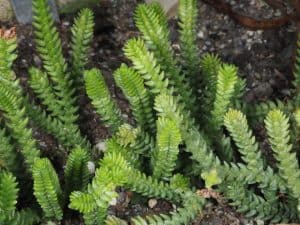
Watch chain plant typically doesn’t need repotting more than once a year. The best time to do so is in spring and before you begin watering again. If your plant becomes root bound, you may need to re-pot it sooner.
To check if it’s time for repotting, see if you can gently pull away some of its branches; if you can remove them easily, then your succulent needs to be potted up into a larger container.
Dormancy
In its native habitat, Crassula muscosa is semi-deciduous; that is, it will shed its leaves in times of drought and when a cold spell hits. This shrub can withstand freezing temperatures but only for a few hours at a time. Don’t worry about your succulents if you live in an area with mild winters.
In general, these plants do not tolerate frost or freezing temperatures well. If you want to keep them outdoors year-round, bring them indoors before temperatures dip below 60 degrees F. (16 degrees C). If possible, keep them on a sunny windowsill so they get plenty of light during their dormancy period.
Crassula muscosa flower & Fragrance
This succulent produces delicate white flowers which bloom in Spring and Summer. The delicate petals have a unique fragrance. Like many succulents, Crassula muscosa is drought tolerant and thrives when planted in well-drained soil.
Growth rate
Crassula muscosa is a slow-growing succulent. A 1-gallon pot crassula needs a full year to reach 6 in height, which is considered slow growth for this succulent species. Be patient; it will grow.
This plant may become bushy or even cascade over time with regular watering and fertilizing. It has a tendency to look lanky if not well-established at purchase. Regular, deep watering will encourage good blooming and branching.
Toxicity
There are no known hazards associated with Crassula muscosa, so it is considered non-toxic. When ingested, it may cause mild stomach upset, but will most likely pass through your system without causing you any harm. Due to its lack of toxicity, Crassula muscosa is an excellent choice for children and pets.
Also, like most succulents, there is little risk of being allergic to Crassula muscosa. The only time that you should be concerned about allergies is if you have a history of plant allergies or if someone in your household has a history of plant allergies. If that’s not the case, then don’t worry about it!
USDA Hardiness Zones
Crassula muscosa will thrive in USDA hardiness zones 9b through 11. In areas with colder winters, it can be grown as a container plant and moved indoors for winter.
Pests and diseases
Crassula muscosa succulents are particularly susceptible to infestation by aphids, mealybugs, and scale insects. They may also fall victim to red spider mites, which can cause brown patches on leaf surfaces.
These pests are typically found at higher temperatures during the spring and summer months. Aphids suck plant sap and leave behind honeydew, a sticky substance that attracts ants and black sooty mold.
Mealybugs secrete a waxy material called cotton that covers their bodies and clogs their feeding tubes. Scales attach themselves to leaves and stems, sucking out nutrients from within plants. Red spider mites pierce leaves with small mouthparts; damage caused by these pests is usually first visible as yellowing or bronzing of affected areas.
Conclusion
If you’re looking for a unique addition to your living room, then Crassula muscosa is definitely worth taking a look at. These interesting plants have been around for some time now, but their popularity is growing among those who want something new in their garden.
In most cases, these plants don’t require much attention and can survive with minimal water or care giving. If you see one at your local greenhouse or nursery and you like it, give it a try!
